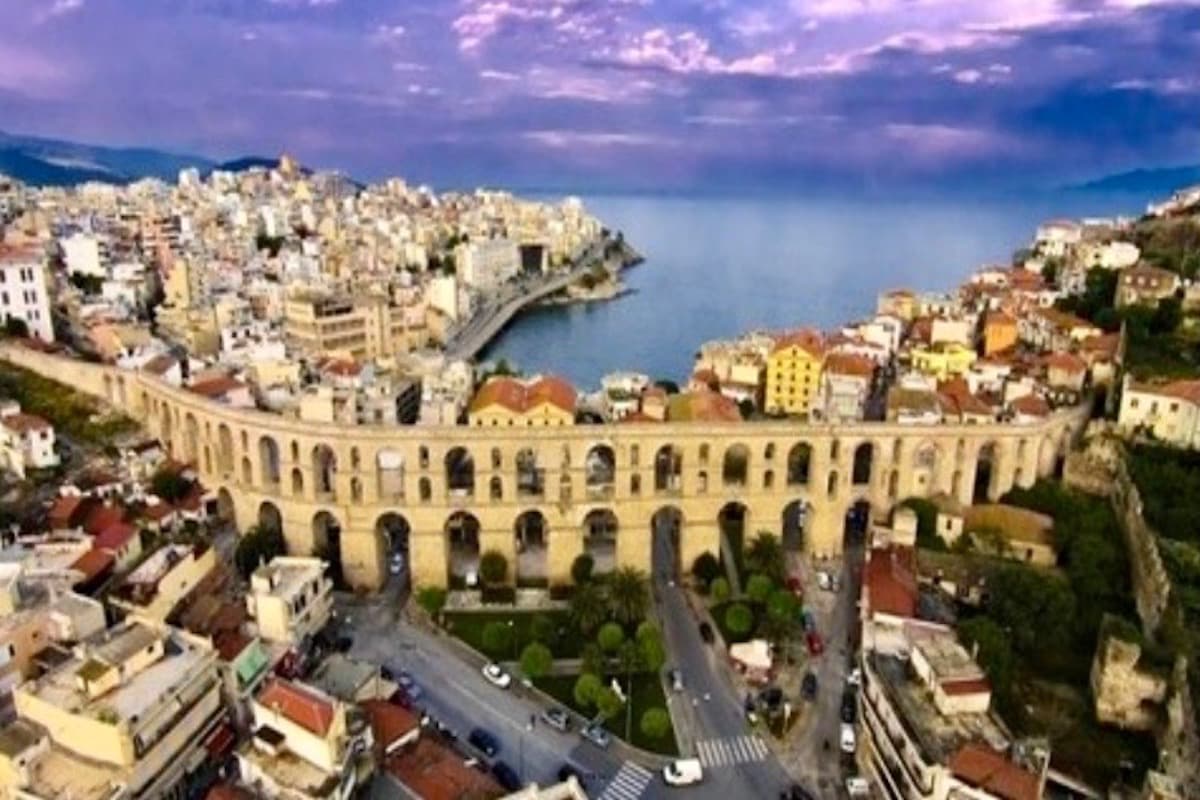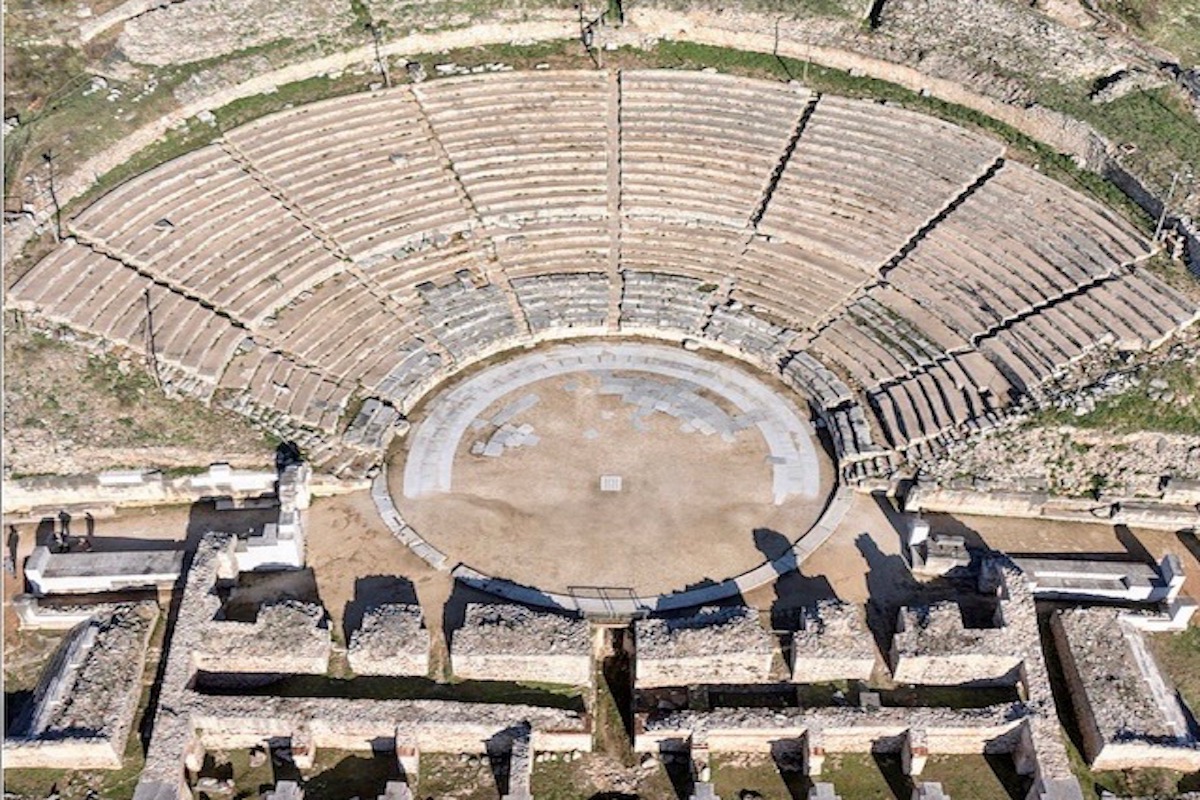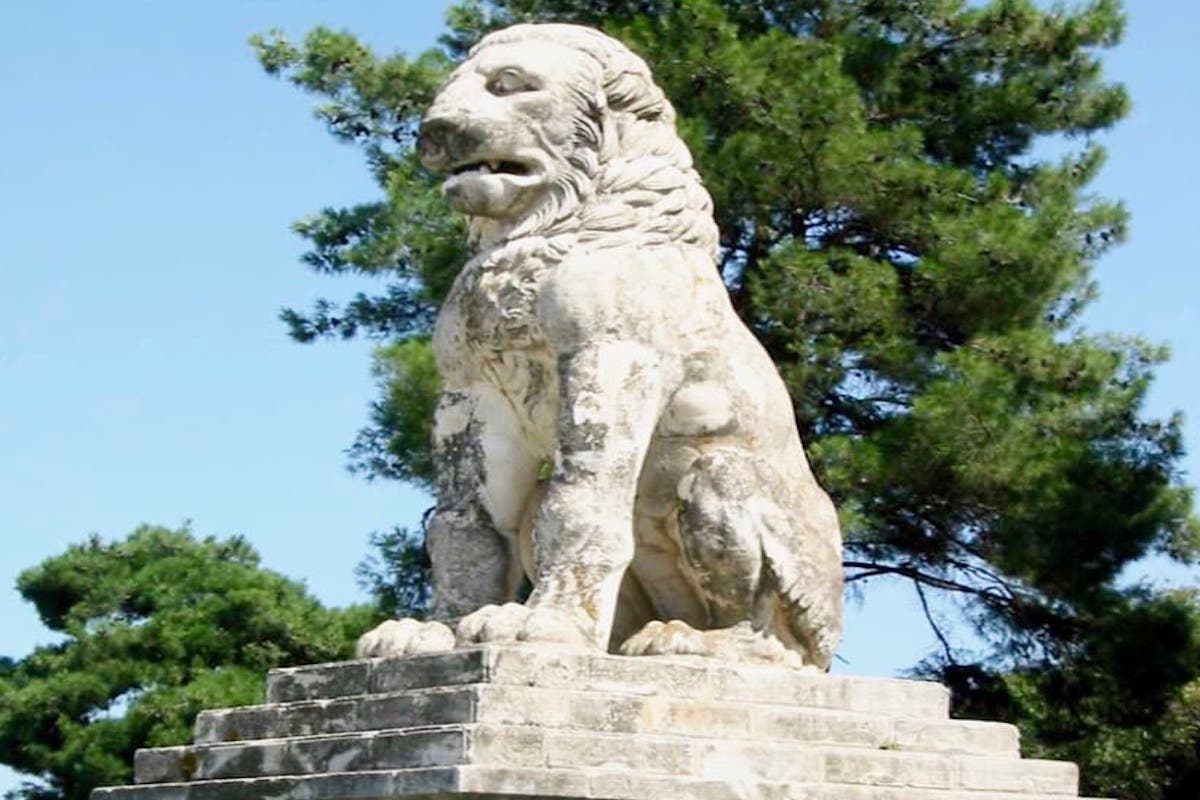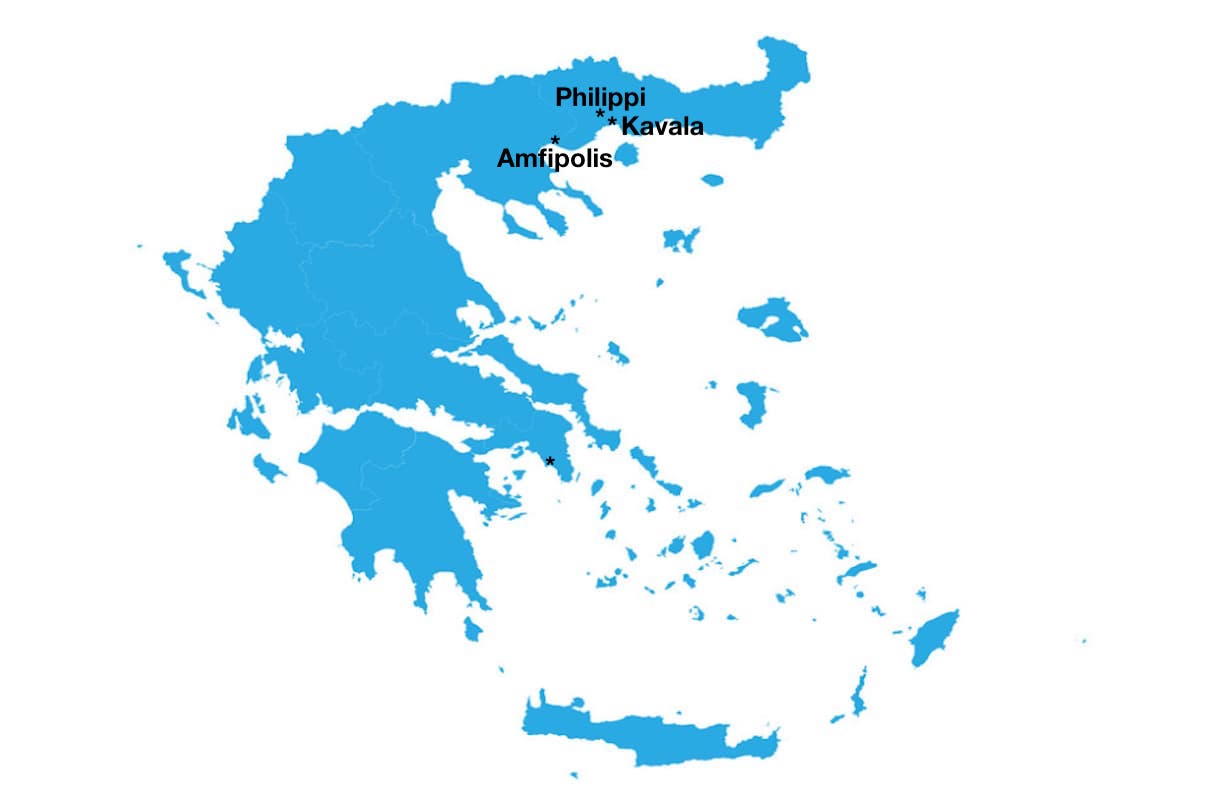KAVALA TOUR - AMPHIPOLIS - PHILIPPI
Private Tours Greece to Northern Greece
Discover Northern Greece in Luxury. Private Tours Greece to Thessaloniki, Kavala, Philippi, and Amphipolis
Kavala Tour
Suppose you're planning a trip to Greece. In that case, consider visiting the archaeological sites of Amphipolis, Philippi, and the city of Kavala with our Kavala tour organized by Private Tours Greece. Kavala is the capital of its prefecture, also called Kavala, and is one of the most attractive cities in Greece. Located east of Thessaloniki, about 150 km or a one-and-a-half-hour drive, it is a destination that Private Tours Greece suggests with the Kavala tour in the northern part of Greece combined with other exciting destinations. These places are in the northeast region of Greece and are renowned for their rich history and cultural significance. A tour of this region can be a great way to explore the ancient ruins, archaeological sites, and museums that showcase the region's heritage. Amphipolis, one of the most significant cities in ancient Greece, is home to the famous Lion of Amphipolis, an impressive marble statue dating back to the 4th century B.C. You can also visit the ancient Amphipolis Archaeological Site, which includes remains of a theater, an agora, and a sanctuary dedicated to the goddess Artemis. A visit to Amphipolis is a part included in the Kavala tour. Philippi, a living testament to Greece's cultural heritage, is a haven for history enthusiasts. The Philippi Archaeological Site, home to the Theater of Philippi, an ancient agora, and the Roman Forum, is a playground for those who love to explore the past. The Philippi Baptistery, a site of early Christian worship, is a place of spiritual significance. A visit to Philippi, a part of our Kavala tour, is a journey of immersion into Greece's cultural legacy. Kavala is a coastal gem with its stunning beaches, picturesque harbor, and Ottoman-era architecture. The 15th-century fortress Kavala Castle offers breathtaking views of the city and the sea, a sight that will leave you in awe. The Imaret, an Ottoman-era building transformed into a hotel and museum, is a testament to Kavala's rich history. A visit to Kavala, a part of our Kavala tour, promises a journey of beauty and discovery. Whether you're interested in history and architecture or simply exploring new places, a Kavala tour and a visit to Amphipolis and Philippi can be an unforgettable experience that offers a glimpse into Greece's rich cultural heritage.
Kavala
Kavala is a modern city and the main port of eastern Macedonia. It is opposite the island of Thassos and was built on the site of the ancient city of Neapolis. The beautiful squares, modern buildings, and shopping centers on the city's western side are distinct from the traditional old houses, small gardens, and alleyways of the eastern side. The harbor is picturesque, with countless colorful fishing boats mooring along the water's edge. The town's impressive landmarks include the old walls, the Byzantine castle, and the Kamares - an aqueduct constructed by Suleiman the Magnificent in the 16th century - Mehmet Ali's house and the Imaret, a Turkish building. Settlers from the island of Thassos originally founded Kavala in the 7th century B.C., formerly called Neapolis - New City. The city gained its autonomy in the 6th century B.C. After the Persian Wars, Neapolis became a member of the Delian League in 454 B.C. Later, becoming a city of Macedonia, it lost its autonomy and importance and served as a port for the nearby town of Philippi. In the 9th century, Kavala fell under the Byzantines, who called it Christoupolis. Later, in 1387, Kavala was conquered by the Turks, who destroyed it in 1391. Kavala got its modern name in the middle or end of the 15th century. Its settlement and foundation took place in 1527 or 1528.

Kavala
An aqueduct was erected by Suleiman the Magnificent in the 16th century.
Philippi
The people of Thasos, aware of the region's abundant precious metals, timber, and agricultural produce, established the city of Krinides in 360 BC. This decision was driven by their desire to harness the area's economic potential. However, their aspirations were soon threatened when the Thracians posed a significant challenge to the city's security in 365 BC. Faced with this imminent danger, the people of Krinides sought assistance from King Philip II of Macedon, renowned for his military prowess and strategic insight. Recognizing the city's economic and strategic significance, King Philip II rapidly intervened and successfully defended it against the Thracian threat. In recognition of his invaluable support, the grateful inhabitants of Krinides decided to rename the town after their benefactor. Henceforth, the city became known as Philippi, a testament to the enduring legacy of King Philip II. The archaeological exploration of Philippi began in 1914 under the auspices of the French School of Athens. However, due to the disruptions caused by the Second World War, the excavations were temporarily halted. Fortunately, after the war, the Greek Archaeological Service and the Archaeological Society of Athens resumed the excavations, delving deeper into the city's rich historical layers. These ongoing efforts have provided invaluable insights into the city's past, highlighting its significance.

Philippi
Philip II conquered, fortified, and renamed the city after himself.
Amphipolis and the tomb of Kasta hill
Ampphipolis and the Tomb of Kasta Hill are destinations worth visiting while traveling in northern Greece. They are just an hour from Thessaloniki or half an hour from Kavala, next to the motorway, and easy to reach. Private Tours Greece: Some of the suggested tours in northern Greece, like the Kavala tour, include Amphipolis as a visiting destination due to the importance of this archaeological site and the unique nature and landscape of the surrounding areas—an excellent destination for visitors interested in Classical Greece and the early era of Christianity.
Amphipolis
Amphipolis is 98 km from Thessaloniki, or about an hour's drive. It is near the mouth of the Strymon River and Pagaion Mountain, famous for its gold mines. The city was founded by General Hagnon as a colony for the Athenians in 437 BC during the time of Pericles. Because of the Peloponnesian War, Athens lost control of the city, and Amfipolis remained independent until Philip II in 357 BC, which became part of the Macedonian Kingdom. Many sanctuaries have been discovered dedicated to the Olympians such as Apollo, Artemis, and Aphrodite, as well as local deities and demons such as the muse Clio, Dioscouri, Asclepius, and others. Some of the findings date back to the 5th century B.C. A famous funerary monument is the Lion of Amphipolis, dating from the 4th century B.C., probably belonging to Alexander's general Laomedon. Here, Alexander prepared for his campaigns against the Thraceans in 335 BC and before the invasion of Asia. The harbor was also used as a naval base during his Asian campaigns. His wife Roxana and their young son Alexander IV, after Alexader's death, were exiled and later murdered here by Cassander. Amphipolis was a fortress of great strategic and economic importance throughout Macedonian sovereignty. Amphipolis was also one of the first Christian communities founded in Europe. In the mid-1st century, St. Paul made a short stop from Philippi to Thessaloniki, and the city became an important center of early Christianity. Some early Christian churches' remains occupy the ancient acropolis's site. After the 9th century, a new harbor town called Chrysoupolis succeeded Amphipolis. Over the city's ruins, a small settlement called Marmarion developed, which served as a stopover for travelers at the river crossing of the Strymon.
The tomb of Kasta hill
In 2012, Greek archaeologists excavated a large tomb inside the Kasta Hill, the vast burial mound northeast of Amphipolis. The perimeter wall of the tomb is 497 meters long. The excavations unearthed a pebble mosaic depicting Hades abducting Persephone, but the figures are Philip and Olympias. The mosaic confirms the tomb's Macedonian character. The tomb's identity remains unknown, and the excavations are continuing. Dr Katerina Peristeri, the archaeologist leading the excavation, dates the tomb to the period after the death of Alexander the Great in 323 BC.

The Lion of Amphipolis
A famous monument of burial character is the Lion of Amphipolis, dating to the 4th century BC and probably belongs to the general of Alexander, Laomedon.





